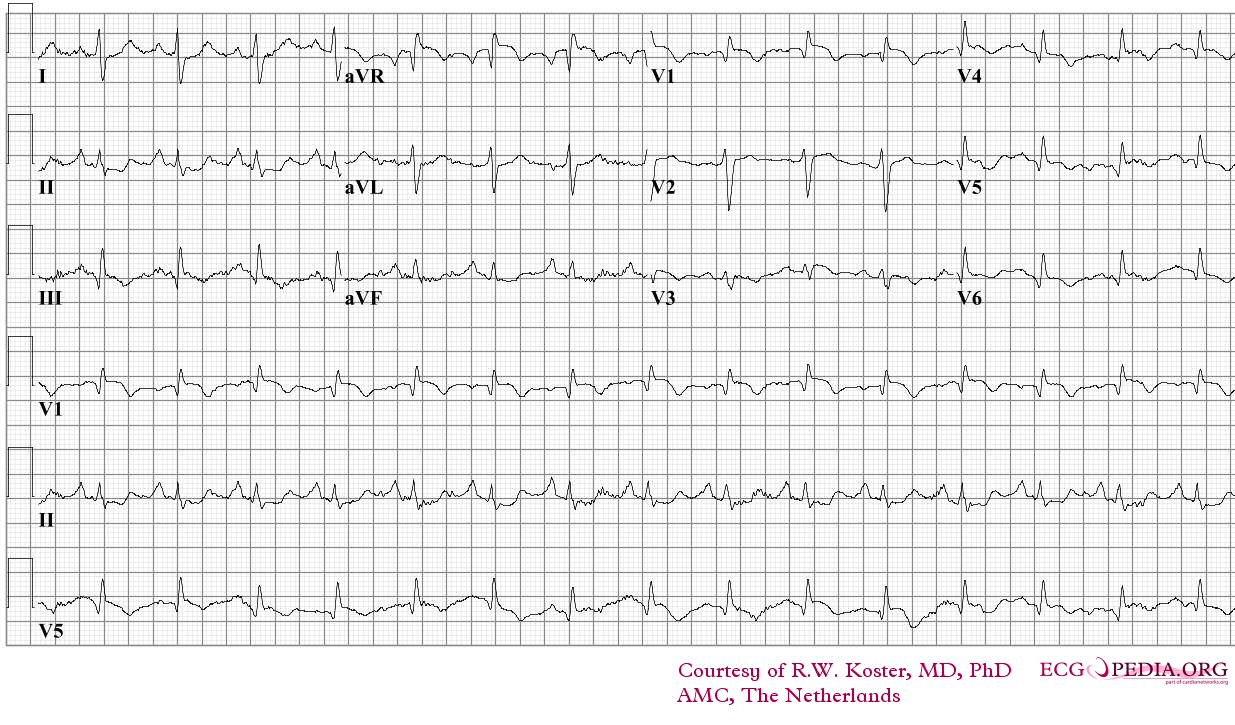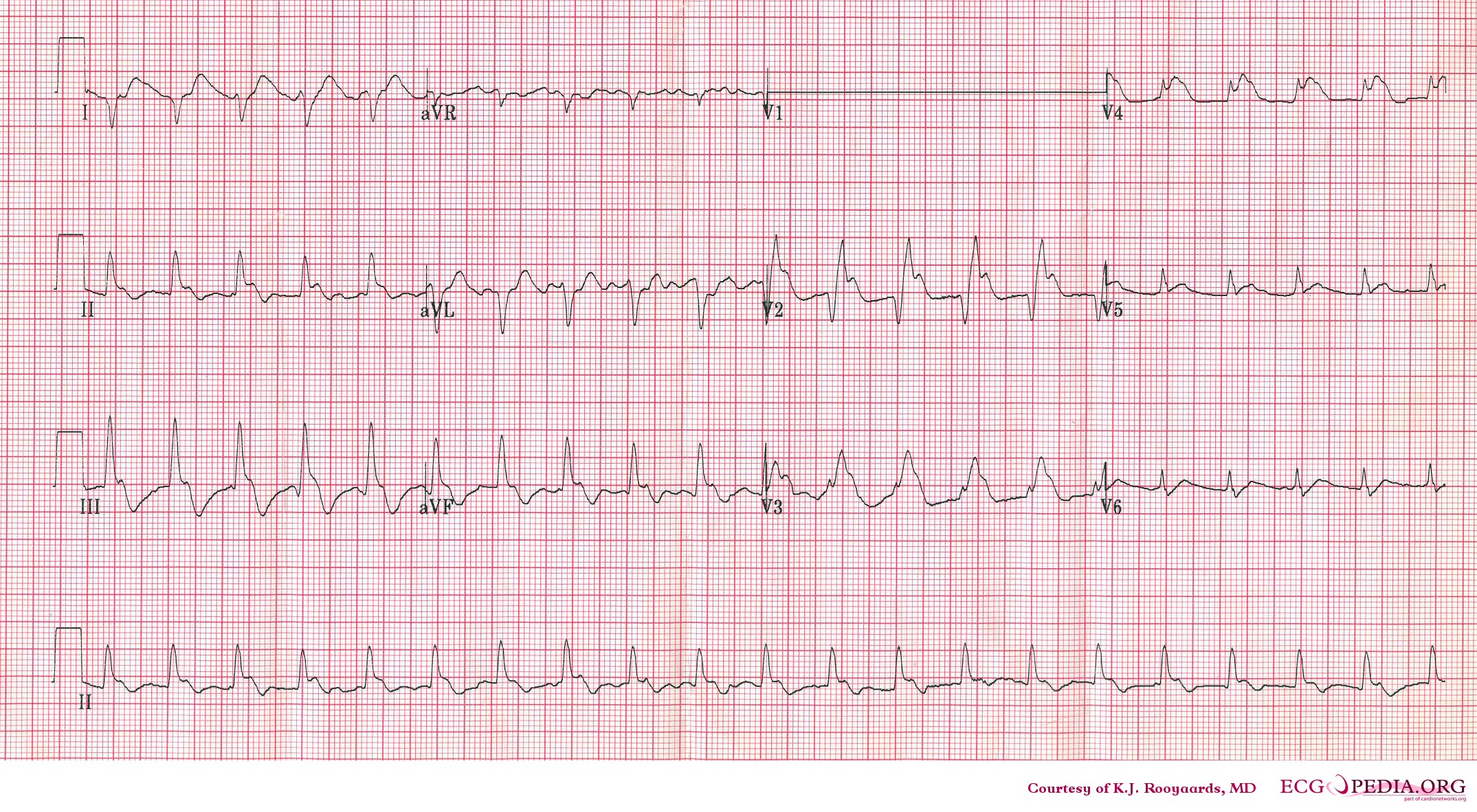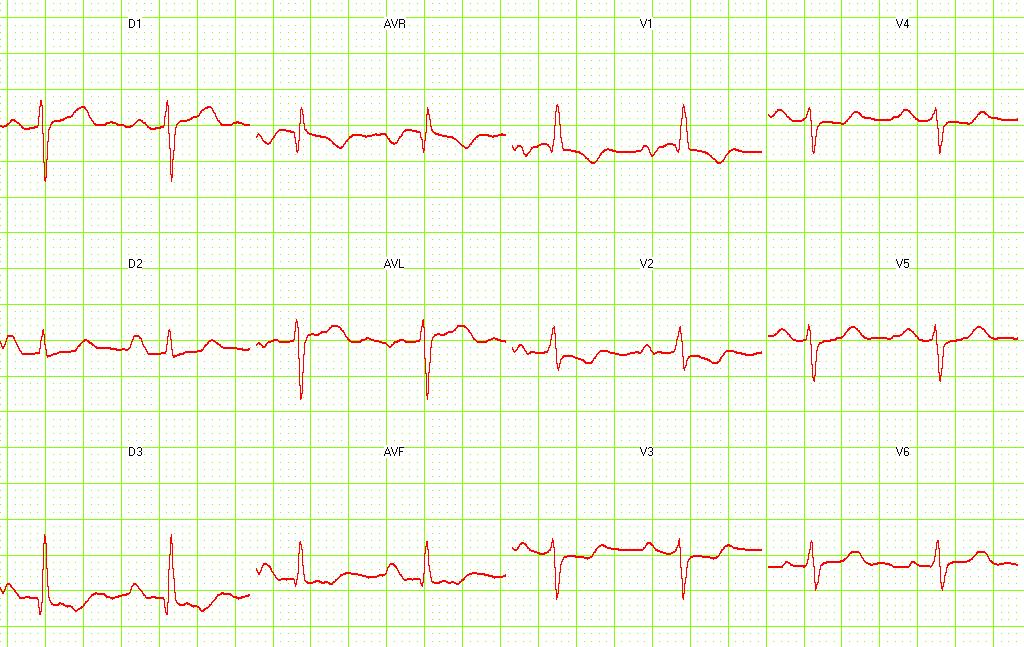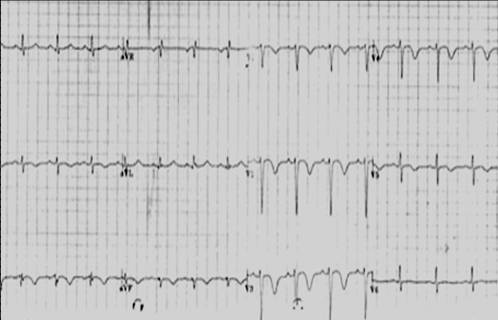Pulmonary embolism electrocardiogram
|
Pulmonary Embolism Microchapters |
|
Diagnosis |
|---|
|
Pulmonary Embolism Assessment of Probability of Subsequent VTE and Risk Scores |
|
Treatment |
|
Follow-Up |
|
Special Scenario |
|
Trials |
|
Case Studies |
|
Pulmonary embolism electrocardiogram On the Web |
|
Directions to Hospitals Treating Pulmonary embolism electrocardiogram |
|
Risk calculators and risk factors for Pulmonary embolism electrocardiogram |
Editor(s)-In-Chief: C. Michael Gibson, M.S., M.D. [1], The APEX Trial Investigators; Associate Editor(s)-in-Chief:
Overview
EKG abnormalities in the setting of pulmonary emolism are non-specific.[1][2] The EKG may also lack sensitivity as the EKG may be normal in the setting of a pulmonary embolus. In a prospective study EKG abnormalities were present in 70% of patients with documented acute pulmonary embolism. The most common EKG abnormality was nonspecific ST-segment and T-wave changes.[3] An electrocardiogram (ECG) is routinely performed in all patients with chest pain to assess for a myocardial infarction, but the diagnosis of a pulmonary embolism should be kept in mind as well.
Electrocardiogram
Various ECG abnormalities are reported in PE patients; however, the ECG findings lack sensitivity and specificity for PE. T wave inversion in the anterior leads has been reported in many studies as the most common ECG finding among patients with PE, particularly massive PE.[4][5][2] Shown below is a list of ECG findings in PE:
- T wave inversion in the anterior leads
- Sinus tachycardia
- Incomplete RBBB
- Complete RBBB
- S1Q3T3
- Right axis deviation
- ST segment and T wave non specific changes
- P pulmonale
- Low QRS voltage
- Normal heart rhythm
- ST elevation (rare)
Sinus Tachycardia
Sinus tachycardia is a common ECG finding in the setting of a pulmonary embolism, but it lacks specificity.[6]
T Wave Inversion
T wave inversion in the anterior leads has been reported in many studies as the most common ECG finding among patients with PE, particularly massive PE.[4][5][2]
T wave inversion in the anterior leads represent reciprocal changes related to infero-posterior ischemia due to compression of the right coronary artery (RCA), caused by pressure overload in the right ventricle following an acute PE.[7]
Right Bundle Branch Block
Complete or incomplete right bundle branch block (RBBB) is commonly seen in patients with pulmonary embolism, but is neither sensitive nor specific.
Cor Pulmonale and Right Heart Strain
Signs of right heart strain or acute cor pulmonale may be present in patients with a massive pulmonary embolism. The classic sign S1Q3T3 is characterized by the presence of a large S wave in lead I, a large Q wave in lead III and an inverted T wave in lead III .[8][9]
Q waves in the Anterior Leads with ST Elevation
The presence of Q waves in the anterior leads with ST-elevation in the setting of PE has also been described in a few case reports.[10]
Prognostic Assessment
ECG findings that are associated with a poor prognosis include:[4]
- Atrial arrhythmias
- Right bundle branch block
- Q-waves in the inferior leads
- Precordial T-wave inversion and ST-segment changes.
- Development of a QR wave in lead V1 is identified as an independent risk factor for an adverse prognosis.[11]
Electrocardiographic Examples
Shown below is an EKG of a patient with a pulmonary embolism:

Copyleft image obtained courtesy of ECGpedia ecgpedia
Shown below is an EKG of a patient with a pulmonary embolism:

Copyleft image obtained courtesy of ECGpedia ecgpedia
Shown below is an EKG of a patient with a pulmonary embolism:

Image courtesy of Dr Jose Ganseman Dr Ganseman's webpage: An ultimate source of EKG
Shown below is an EKG of a patient with a pulmonary embolism:

Image obtained courtesy of Amal Mattu, M.D.
Shown below is an EKG of a patient with a pulmonary embolism:

Image obtained courtesy of Amal Mattu, M.D.
References
- ↑ Geibel A, Zehender M, Kasper W, Olschewski M, Klima C, Konstantinides SV (2005). "Prognostic value of the ECG on admission in patients with acute major pulmonary embolism". Eur Respir J. 25 (5): 843–8. doi:10.1183/09031936.05.00119704. PMID 15863641.
- ↑ 2.0 2.1 2.2 Rodger M, Makropoulos D, Turek M, Quevillon J, Raymond F, Rasuli P; et al. (2000). "Diagnostic value of the electrocardiogram in suspected pulmonary embolism". Am J Cardiol. 86 (7): 807–9, A10. PMID 11018210.
- ↑ Stein PD, Saltzman HA, Weg JG (1991). "Clinical characteristics of patients with acute pulmonary embolism". Am J Cardiol. 68 (17): 1723–4. PMID 1746481.
- ↑ 4.0 4.1 4.2 Ferrari E, Imbert A, Chevalier T, Mihoubi A, Morand P, Baudouy M (1997). "The ECG in pulmonary embolism. Predictive value of negative T waves in precordial leads--80 case reports". Chest. 111 (3): 537–43. PMID 9118684.
- ↑ 5.0 5.1 Stein PD, Dalen JE, McIntyre KM, Sasahara AA, Wenger NK, Willis PW (1975). "The electrocardiogram in acute pulmonary embolism". Prog Cardiovasc Dis. 17 (4): 247–57. PMID 123074.
- ↑ Abecasis J, Monge J, Alberca D, Grenho MF, Arroja I, Aleixo AM (2008). "Electrocardiographic presentation of massive and submassive pulmonary embolism". Rev Port Cardiol. 27 (5): 591–610. PMID 18717213.
- ↑ Goldhaber SZ (1998). "Pulmonary embolism". N Engl J Med. 339 (2): 93–104. doi:10.1056/NEJM199807093390207. PMID 9654541.
- ↑ McGinn S, White PD. Acute cor pulmonale resulting from pulmonary embolism. J Am Med Assoc 1935;104:1473–1480.
- ↑ Panos RJ, Barish RA, Whye DW, Groleau G (1988). "The electrocardiographic manifestations of pulmonary embolism". J Emerg Med. 6 (4): 301–7. PMID 3225435.
- ↑ Raghav KP, Makkuni P, Figueredo VM (2011). "A review of electrocardiography in pulmonary embolism: recognizing pulmonary embolus masquerading as ST-elevation myocardial infarction". Rev Cardiovasc Med. 12 (3): 157–63. PMID 22145193.
|access-date=requires|url=(help) - ↑ Kucher N, Walpoth N, Wustmann K, Noveanu M, Gertsch M (2003). "QR in V1--an ECG sign associated with right ventricular strain and adverse clinical outcome in pulmonary embolism". European Heart Journal. 24 (12): 1113–9. PMID 12804925. Retrieved 2011-12-05. Unknown parameter
|month=ignored (help)